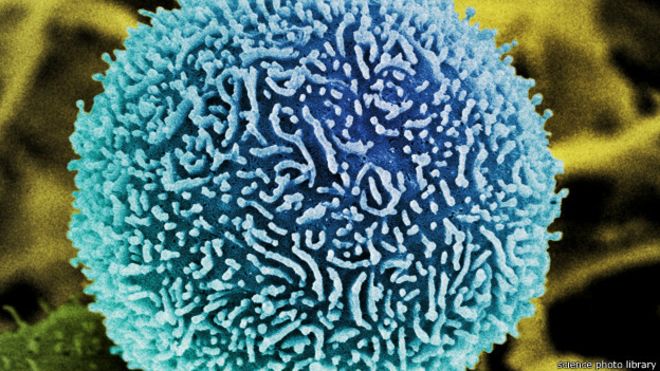血癌有很多種,其中一種是骨髓增生症,即骨髓增生性腫瘤,病人需長期服食抗癌藥,但有一定副作用,而且對病情幫助不大。有醫生指出,其實現已有兩種新藥,可惜暫時需病人自費,期望將來有需要的病人可獲得更多資助。

個案一:公務員獲政府資助
陳先生1998年發現血小板過多,轉介到瑪麗醫院血液科,開始服化療藥控制血小板,但副作用是白血球下降,即令抵抗力下降,及容易疲倦。2005年起需加服另一種化療藥。
到2012年,醫生說美國有一種新的標靶藥,適合他的情況,於是開始服食,並由藥廠免費提供一年藥量。一年後本應開始要自費,幸好他是公務員,由政府支付藥費,約4萬元一個月。至今服這標靶藥4年,好處是副作用(例如抵抗力低、肝脾脹大等)少,而對血小板的控制也很好。

香港大學李嘉誠醫學院內科學系臨牀助理教授喬夏利醫生指出:「『骨髓增生症』的影響包括紅血球增生、血小板增生、骨髓纖維化,以骨髓纖維化最嚴重。血小板增生到了後期,肝臟和脾臟會明顯脹大,陳先生正是這情況。他在2005年控制血小板的效果轉差,可能是因為已開始骨髓纖維化。而該種標靶藥特別在控制骨髓纖維化的病徵方面,效果顯著。」
個案二:新配方少副作用
林先生患了「骨髓增生症」約20年,紅血球、白血球、血小板均高,因此有時需放血來降低血球水平,並長期服化療藥,藥物副作用包括尿酸高、容易疲倦等。2008年,他的白血球再飆升,醫生懷疑他的骨髓開始纖維化。約兩年前,醫生告知可試用新的「甲型干擾素」,注射後白血球下降,肝臟縮小至較接近正常,他感覺輕鬆多了。現在每星期注射一次,可在家自行注射,十分方便。

喬醫生解釋當時建議林先生試用干擾素的原因:「因為他當時服化療藥的劑量已相當大,放血亦很頻密,但紅血球和白血球水平仍控制得不好,骨髓檢查也發現他已有骨髓纖維化迹象,所以必須採用更好的辦法,而不是再加大劑量。他改服干擾素後,最明顯的變化是控制白血球變得較容易,放血次數減少,肝、脾縮小。現在用的是新配方甲型干擾素,副作用不多,大部分病人均能適應,但政府暫時對於骨髓增生症患者用這藥並沒有藥費資助。」
早期症狀不明顯
喬醫生表示,「骨髓增生症」早期症狀不明顯,因此很容易被忽略。「另一方面,骨髓增生症會增加中風、心肌栓塞和全身靜脈血栓的風險。現時一般患者都接受一線治療,包括服阿士匹靈、傳統化療藥,或定期放血等。但口服化療藥和放血治療,目的都是防止嚴重病變,不會改善病情。而且即使接受一線治療,有部分患者仍會隨時間演變成急性白血病。」
而近年獲確認療效的標靶藥,可以改善骨髓纖維化病人的病徵及增加存活率,副作用比傳統化療藥少。另外,新配方的甲型干擾素較為長效,每星期皮下注射一次,九成病人接受這療法後血球水平回復正常。
部分病人獲資助
現時約有500名「骨髓增生症」病人定期到瑪麗醫院覆診,大部分接受一線治療,用標靶藥或甲型干擾素的只有約三四十人。前者約需4萬元一個月,後者約三四千元一個月,均需自費,有部分獲志願機構如聖雅各福群會等資助。
「始終『骨髓增生症』不是常見病,所以未獲政府資助,但也應該讓病人知道有新藥可選擇。」喬醫生說。
香港骨髓增生性腫瘤公開講座
主題:骨髓增生性腫瘤之治療與管理
日期:2016年6月26日(星期日)
時間:上午10時至中午12時
地點:香港中環愛丁堡廣場五號香港大會堂演奏廳
講者:香港大學李嘉誠醫學院內科學系臨牀助理教授喬夏利醫生
報名:2255 3245

喬夏利醫生
利用顯微鏡分析病人的血液和骨髓






















.jpg)




